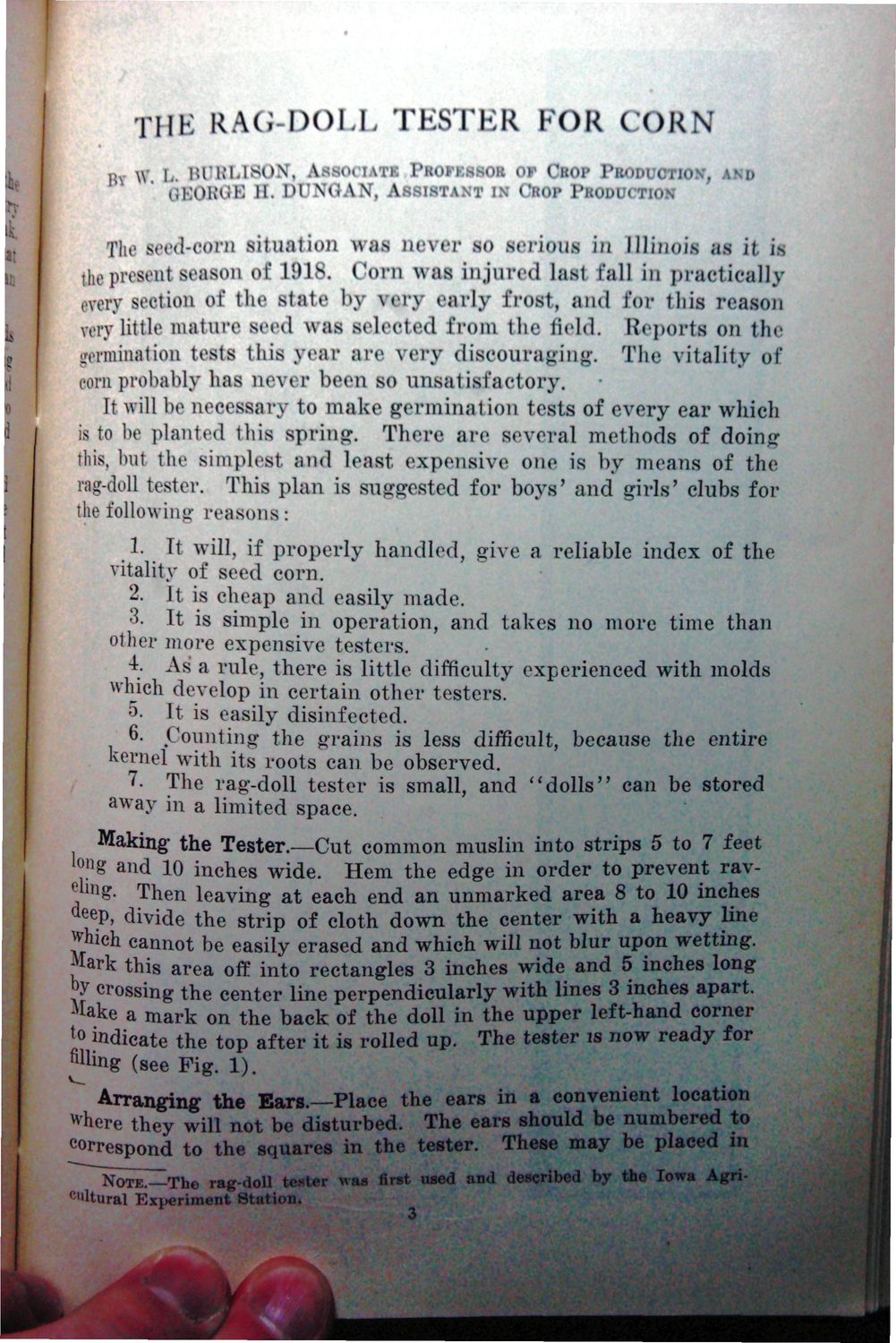| |
| |
Caption: War Publications - WWI Compilation 1923 - Article 34
This is a reduced-resolution page image for fast online browsing.

EXTRACTED TEXT FROM PAGE:
t IIiK RAG-DOI.L TESTER FOR CORN K PR0FI880B OF CROP PRODUCTION, A^D A8SI8TANT IN CftOP PBODUCTION The seed-corn situation was never so serious in Illinois as it is the present season of 1918. Corn was injured last fall in practically every section of the slate by very early frost, and for this reason very little mature seed was selected from the lirhl. Report! on the germination tests this year are wvy discouraging. The vitality of corn probably has never been so unsatisfactory. It will be necessary to make germination tests of every ear which is to be planted this spring. There are several methods of doing this, but the Bimplest and least expensive one is by means of the rag-dull tester. This plan is suggested for boys' and girls' clubs for the following reasons: 1. Tt will, if properly handled, give a reliable index of the vitality of seed corn. 2. It is cheap and easily made. 3. It is simple in operation, and takes no more time than other more expensive testers. *; As a rule, there is little difficulty experienced with molds which develop in certain other testers. 5. It is easily disinfected. 6. Counting the grains is less difficult, because the entire kernel with its roots can be observed. 7. The rag-doll tester is small, and " d o l l s " can be stored away in a limited space. Making the Tester.—Cut common muslin into strips 5 to 7 feet io H and 10 inches wide. Hem the edge in order to prevent ravlln * &. Then leaving at each end an unmarked area 8 to 10 inches de own the center with a heavy JJiich cannot be easily erased and which will not blur upon wetting. Mark this area off into rectangles 3 inches wide and 5 inches long »y crossing the center line perpendicularly with lines 3 inches apart. Make a mark on the back of the doll in the upper left-hand corner to indicate the top after it is rolled up. The tester is now ready for fill ing (see Fig. 1). Arranging the Bars.—Place the ears in a convenient location w here they will not be disturbed. The ears should be numbered to correspond to the squares in the tester. These may be placed m c NOTE.—*„<, , „ 8 „„,. . — - — descr »ltural Experiment Station. 4 ^
| |